Reports of widespread evacuations, burnt-out communities, wildlife loss, and a dense smoke haze devastated the tourism industry, casting a shadow over travel destinations globally.
In 2022, wildfires destroyed approximately 800,000 hectares across the Mediterranean regions in Europe, with Greece experiencing its worst wildfires in decades. Scientific projections indicate that the Mediterranean region will likely encounter more frequent and intense weather extremes due to climate change.
The global surge in wildfires extended beyond European borders, affecting North America and North Africa. In 2023, Canada witnessed an exceptionally intense wildfire season from May to October, consuming approximately 18 million hectares in Alberta, British Columbia, and Saskatchewan.
The tourism industry, already facing substantial disruptions and financial losses, is now confronted with additional challenges. Moody’s climate models predict a potential decline in the allure of Southern European travel destinations due to rising temperatures and an increased risk of extreme wildfire events. This decline poses a significant threat to Greece, which relies heavily on the travel industry. The fierce wildfires have shattered Mediterranean communities, leading to job losses and economic hardship.
Australia is bracing for another potentially catastrophic bushfire season. The aftermath of the 2019/20 Black Summer saw cancellations of trips to Australia from the United States, the United Kingdom, and China, resulting in a staggering $4.5 billion economic setback.
As extreme weather events are projected to worsen, experts emphasize the urgency of enhancing investments in prevention and mitigation. In light of these challenges, this blog post will delve into the impact of these devastating wildfires on the tourism industry and explore how exci’s early AI-powered wildfire/bushfire detection system can help minimise their impact.
The Impact of Wildfires on Popular Tourist Destinations
Europe: Tourist Hotspots Ravaged by Uncontrollable Flames
Renowned for its history, landscapes, and culture, Europe has long attracted global travellers. However, in recent years, the region faced an escalating threat: uncontrollable wildfires wreaking havoc, especially in popular tourist destinations. The Mediterranean countries, encompassing Greece, Italy, Spain, and Portugal, have borne the brunt of these calamitous blazes, wreaking havoc on their picturesque coastlines, historic landmarks, and lush forests.
These ravaging wildfires, in addition to scarring the physical beauty of these nations, have wrought havoc on their tourism economies. The consequences reverberate throughout the tourism spectrum, affecting everything from high-end luxury resorts to budget-friendly accommodations. Local businesses find themselves struggling to recover amid the extensive devastation.
The impact is profound, with widespread cancellations, reduced bookings, and a significant decline in tourist footfall. The scars left behind are not just on the landscape but also on the economic fabric of these nations. Local communities, once reliant on tourism as a lifeblood, now face an uphill battle for recovery in the aftermath of this environmental crisis.
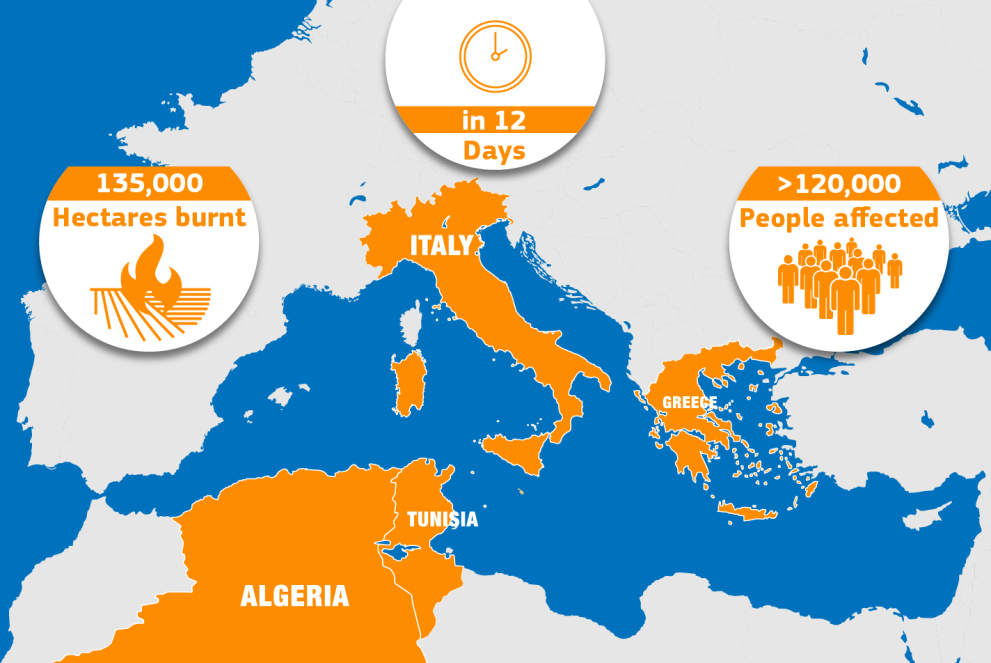 Wildfires in the Mediterranean; Source: Copernicus Research Centre
Wildfires in the Mediterranean; Source: Copernicus Research Centre
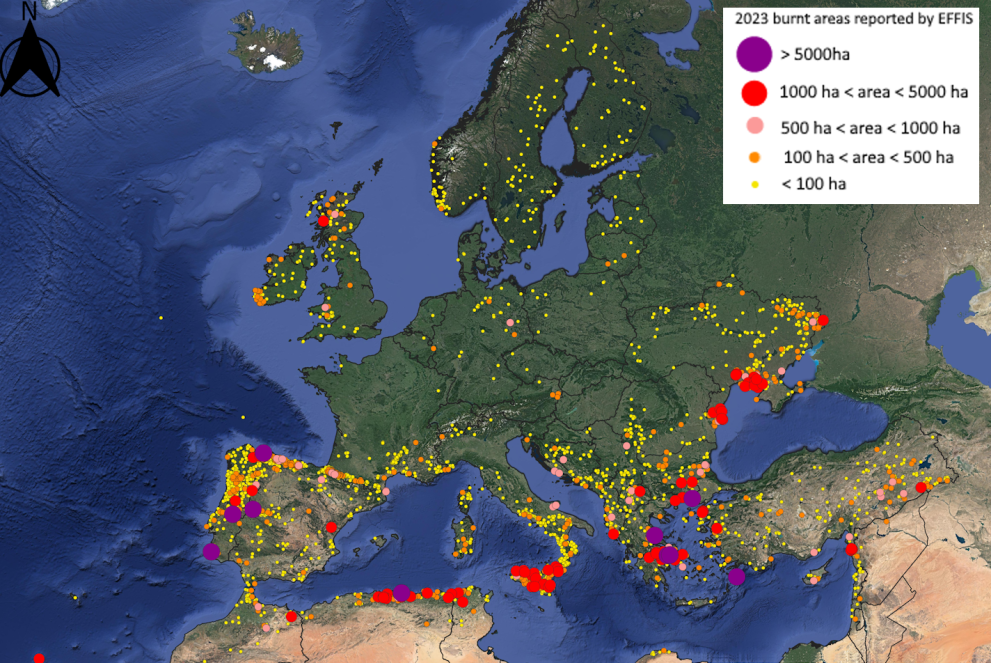 European Wildfires until the End of Ausgust 2023. Source: EFFIS
European Wildfires until the End of Ausgust 2023. Source: EFFIS
North America: The Scars of Fire on Iconic Natural Landscapes
The expansive terrain of North America, renowned for its diverse natural beauty and iconic landmarks, has not escaped the destructive force of wildfires. The United States and Canada witnessed extensive wildfires, scarring cherished forests, national parks, and wildlife habitats.
Renowned tourist destinations like Yellowstone National Park, Yosemite National Park, and the Grand Canyon have faced the wrath of these relentless fires. This has resulted in widespread closures, restricted access, and a tangible impact on the local tourism industry. The loss of these natural wonders has disrupted travel plans for countless visitors and dealt a severe blow to the economies of local communities heavily reliant on tourism.
The imperative for comprehensive wildfire management and restoration efforts has become paramount. These nations are now striving to revive their cherished natural attractions and rejuvenate their tourism sectors after the onslaught of these catastrophic events. The urgency is underscored by the need to balance preserving these natural wonders and safeguarding the livelihoods of those who depend on them.
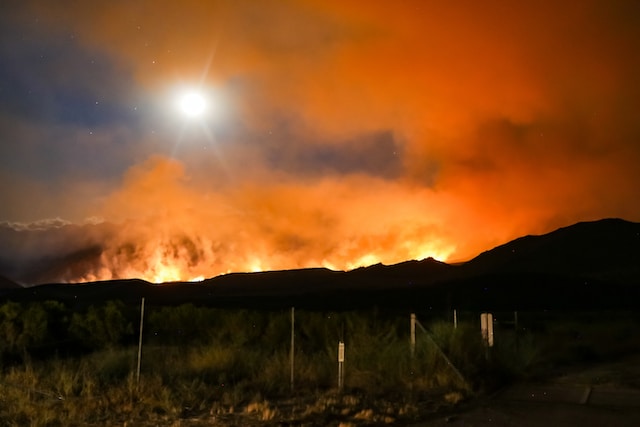
California wildfire. Source: Ross Stone by unsplash
Oceania: Wildfires Threaten the Pristine Beauty of Australia
Australia, famed for diverse wildlife and vibrant cities, faces persistent wildfires, endangering its stunning landscapes and tourist spots. The 2019/20 bushfires, in particular, significantly disrupted Australia’s tourism sector. Popular tourist hubs like the Great Barrier Reef, the Sydney Opera House, and the iconic Outback have encountered long-lasting effects after destructive wildfires.
This has resulted in a significant decline in international tourist visits, causing a considerable setback to the country’s tourism-reliant economy. The environmental ramifications have been equally severe, with critical wildlife habitats destroyed, biodiversity loss, and irreversible harm to the distinctive ecosystems that draw millions of tourists to Australia annually.
The imperative for effective wildfire prevention and sustainable practices grows as the nation rebuilds its tourism infrastructure. Crucial for preserving Australia’s allure, this involves balancing economic interests and safeguarding unique ecosystems for a resilient and sustainable tourism future.
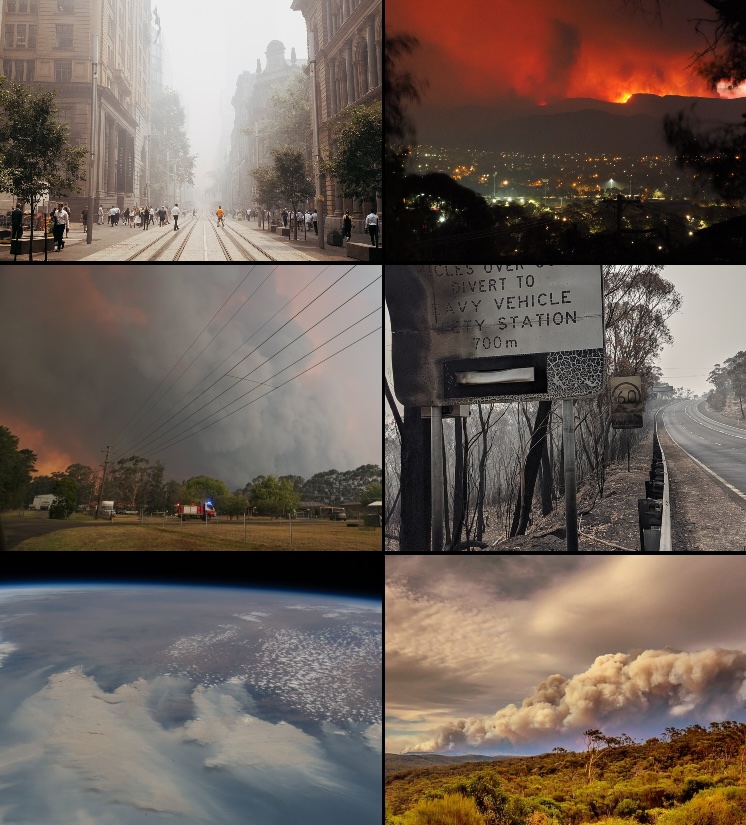 2019-20 Australia Bushfires season. Montage created by Patrickgom0, CC BY-SA 4.0 <https://creativecommons.org/licenses/by-sa/4.0>, via Wikimedia Commons
2019-20 Australia Bushfires season. Montage created by Patrickgom0, CC BY-SA 4.0 <https://creativecommons.org/licenses/by-sa/4.0>, via Wikimedia Commons
Global Economic Fallout
Worldwide, the devastating wildfires have hit the local economies hard, causing a sharp drop in tourism income and leaving businesses struggling to stay afloat. Hotels, restaurants, and tour operators have suffered significant losses, leading to job cuts and financial uncertainty for many who rely on the tourism sector.
Rebuilding after the fires has been slow, adding to the challenges these regions face as they work to recover from the economic blow of the wildfires. Persistent threats of future fires and the looming impact of climate change contribute to the uncertainty and complexity of the path to recovery.
Local Economic Impact
The effects of bushfires on tourism are readily apparent locally. Small-town economies in Australia have been hit particularly hard. Take, for instance, Portside Boat Hire, a modest enterprise in Lakes Entrance, East Gippsland, which relies on 50 per cent of its annual income from Christmas to Australia Day. The economic cost of the bushfires in East Gippsland alone was estimated to be $170-180 million.
Exploring Batlow, renowned for its apples, unveils communities’ profound challenges. While local firefighters played a pivotal role in saving the town, the surrounding landscape suffered extensive damage, including orchards and the iconic Sugarpine Forest Walk. The community, pivotal in Batlow’s revitalisation, now faces significant obstacles in personal, financial, and economic recovery—key components essential for the town’s overall resurgence.
Lasting Economic Threats
The enduring repercussions of this year’s wildfires in Greece cast a shadow over the livelihoods of many, notably impacting beekeepers whose ancestral pine honey business faces a grim future due to the destruction of pine trees. The recent surge of wildfires across Europe raises concerns about lasting effects on farming, tourism, and the broader economy. Reports indicate climate change-induced risks, especially wildfires, significantly threaten European GDP.
Perception Challenges and Global Sentiment
Untouched regions in Australia witness a tourism decline due to concerns about fire and smoke. Globally, prevailing misconceptions about the fires’ widespread impact challenge the tourism industry. This global coverage adversely affects Australia’s reputation, particularly with neighbouring European regions.
The Ripple Effect: How Wildfires Impact Ancillary Industries
Wildfires have ravaged the tourism industry, causing ripple effects across agriculture, food production, and manufacturing sectors. Crop and livestock destruction has led to shortages, spiking food prices and disrupting processing, distribution, and retail operations. This ripple effect has exacerbated the economic strain on local businesses.
Furthermore, the manufacturing and retail industries, closely linked to tourist spending, have seen a significant drop in demand and revenue. This adds another layer of complexity to the challenges communities face in recovering from the aftermath of the wildfires.
Wine Industry Hit: A$ 665 Million Loss
Australia’s Black Summer severely impacted the wine industry, causing unprecedented damage to vineyards and resulting in smoke taint. The estimated loss is staggering, with the wine industry facing a $665 million decline in production and wine revenue. Approximately 1% of all grapes were destroyed, and about 4% of the 2020 vintage suffered from smoke taint, leading some wineries to write off their entire harvest.
Struggling Wine Tourism: A Blow to Local Economies
Wine tourism, vital for local economies, suffered a severe setback, especially in regions like southwest New South Wales. Road closures hindered access, raising recovery concerns for the industry and the return of tourists. The challenges, from vineyard devastation to the impairment of the 2020 vintage, have left a lasting impact on this economically and culturally significant sector in affected regions.
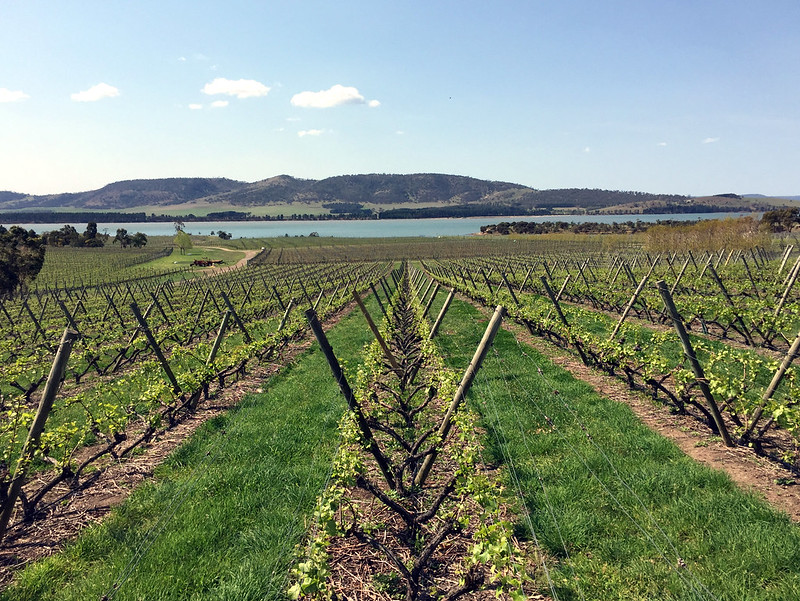 Riversdale Estate Vineyard. Source: Flickr
Riversdale Estate Vineyard. Source: Flickr
Increased Extreme Wildfires: Biodiversity in Crisis
Biodiversity, encompassing species diversity, ecosystems, and genetic variations within them, plays a critical role in maintaining ecosystem health. A decline in biodiversity reduces an ecosystem’s effectiveness and lowers the quality of essential services. These services include soil upkeep, crop pollination, water purification, disease control, climate stability, and the supply of food and shelter.
Wildfires, historically a natural component of ecosystems, represent one of the five essential elements of nature alongside air, water, soil, and space. These elements are crucial for the planet’s balance and human survival. However, climate change has significantly increased the frequency of extreme events, particularly wildfires. These more intense wildfires lead to extensive destruction of forests and wildlife habitats.
Global Ramifications of Biodiversity Loss
The devastating wildfires have wreaked havoc on human communities and left an indelible mark on wildlife and ecosystems. The loss of biodiversity is a poignant consequence, as countless species face the grim reality of habitat destruction and, in some cases, extinction. In Australia, iconic species such as koalas, kangaroos, and various bird species have suffered extensive losses due to destroying their natural habitats. The intricate balance of ecosystems has been disrupted, with ripple effects that extend far beyond the immediate fire-affected areas.
The implications of the biodiversity crisis extend globally, as the unique ecosystems of affected regions contribute to the planet’s overall health. Beyond Australia, wildfires in places like California, Greece, and the Amazon rainforest have similarly led to the loss of vital biodiversity. The destruction of habitats endangers individual species and jeopardises the delicate web of interactions that sustain life on Earth.
Protecting and Rehabilitating Our Ecosystems
As communities confront the aftermath of the fires, urgent conservation efforts are essential to safeguard and restore remaining ecosystems. Ensuring the survival of diverse species and preserving ecological balance is vital for the long-term well-being of our planet.
Airborne Hazards and Respiratory Health Concerns
Wildfires go beyond immediate devastation, posing health and environmental risks as they consume everyday products, releasing hazardous chemicals like lead, arsenic, and asbestos into the air. These toxic materials settle on the ground, posing potential harm. Months after the fires, toxic ash and dust stirred back into the air and became a persistent risk, impacting residents and tourists alike. This poses threats to respiratory health and causes long-term contamination. Subsequent rain can wash these contaminants downstream, further endangering the ocean and marine life.
Forests’s Role in Water Quality and Supply
Forests are crucial in preserving water quality and ensuring a consistent water supply. Over two-thirds of the world’s drinking water comes from forested watersheds, benefiting major cities and numerous smaller urban and rural areas. Trees and forests contribute to enhanced infiltration and reduced erosion, which is critical for preventing sedimentation and pollutants from reaching vital water sources such as rivers and lakes.
Post-Wildfire Challenges to Water Systems
However, after wildfires, the reduced tree cover leads to a decline in the interception of water runoff during storms, resulting in unstable soil and heightened erosion. This, in turn, causes rainfall to carry higher amounts of sediment, ash, and pollutants into lakes, rivers, and reservoirs, posing risks to water supplies.
Substantial Impact on Soil and Water Quality
The impact on soil and water quality is substantial, requiring careful cleanup measures to prevent further harm. Returning residents face acute health risks, emphasising the need for protective measures during cleanup efforts. Furthermore, the contamination of drinking water is a significant concern, as overheated plastic pipes may leach chemicals into community water systems.
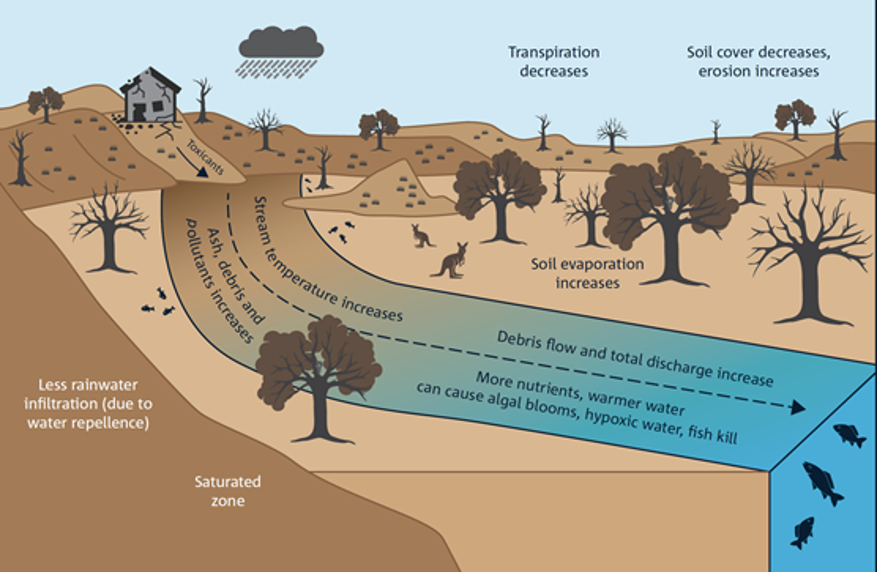 Schematic diagram showing possible postfire changes in hydrologic, erosion and in river processes by CSIRO
Schematic diagram showing possible postfire changes in hydrologic, erosion and in river processes by CSIRO
Mitigating Wildfire Impact on Tourism: Strategies
Government Initiatives for Fire Prevention and Management
In the face of escalating wildfire challenges, a multifaceted approach is essential to mitigate the impact on tourism. Government intervention plays a pivotal role in implementing practical strategies. Proactive measures include investing in innovative firefighting technologies, enforcing stringent land-use policies, and conducting controlled burns to reduce fuel loads in fire-prone areas.
Public awareness campaigns can educate residents and tourists about responsible practices. Meteorological agencies must enhance early warning systems, providing timely information for communities and facilitating prompt evacuation.
Community Engagement for Wildfire Preparedness
Equally vital is robust community support to navigate the crisis. Residents, businesses, and tourism stakeholders must actively participate in wildfire preparedness initiatives. These include creating defensible spaces around properties, engaging in community drills, and adhering to fire safety guidelines. Collaborative efforts establish community networks for information dissemination and emergency response coordination.
Embracing sustainable tourism practices helps build resilience by diversifying economies and reducing dependence on tourism alone. Joint initiatives, such as community-based tourism projects, foster unity and shared responsibility among residents and visitors.
International Cooperation for Wildfire Prevention
The recurrent nature of these disasters has raised concerns about international collaboration to prevent wildfires and achieve Global Forest Goals (GFGs), Sustainable Development Goals (SDGs), and other development objectives. Despite the evident adverse impacts, current investments and actions to mitigate risks fall short.
Greg Mullins, an Emergency Leader for Climate Action (ELCA), emphasised the need for government investment in innovative early fire detection technologies to upgrade Australia’s firefighting capabilities.
This comprehensive approach, encompassing government intervention, community engagement, and international cooperation, is imperative to effectively address the escalating threat of wildfires on tourism and broader sustainability goals.
exci’s AI Wildfire/Bushfire Detection Technology
Enhancing Resilience of Tourism Hotspots
The critical period between fire ignition, detection, and initial response can determine the extent of devastation. exci offers an innovative solution: an advanced AI-powered wildfire/bushfire detection and notification system. Leveraging advanced machine learning algorithms, it swiftly analyzes camera and satellite data to identify smoke and heat, enabling prompt alerts to first responders. By detecting fires early, exci’s system mitigates the impact of wildfires on tourism and communities.
These advanced models have undergone comprehensive training on the world’s largest dataset, collected and owned by exci. The deep machine learning algorithms have been trained to distinguish between smoke and similar environmental elements such as fog, dust, haze, or mist. This training is an ongoing process to deliver unparalleled accuracy and speed in real-time assessments.
exci’s AI wildfire/bushfire technology is well-proven through large-scale deployments. During the 2020/21 Californian fire season, exci processed over One Billion Images from 1,000 ground-based cameras and analysed 500,000 Satellite Images; the system covered an unprecedented 130 million acres across North America. Our AI-assisted Fire Management Tool detected 8,672 fires during the Californian fire season, with an impressive 66% detected within a minute and nearly 100% within ten minutes, with a near-zero rate of false positives.
Certified as Australian-made and Owned, exci oversees a vast network of nearly 25 million acres in Australia, from Victoria to Northern Queensland. As of October 2023, over 131,000 fires had been detected and counting. Continuous refinement efforts have reduced average detection time to a remarkable minute, showcasing substantial enhancements in both efficiency and accuracy.
by Gabrielle Tylor
exci – The Smoke Alarm for the Bush
AI-powered Wildfire/Bushfire Detection Technology
18 December 2023
Don’t let Hazardous Events become Catastrophic!
Contact our friendly team today for a comprehensive demonstration of exci’s system and discover how it can protect your assets while also protecting your community.
Phone: +61 458 594 554
Email: info@exci.ai
Visit our website at https://www.exci.ai/ to learn more and take the first step towards a safer and more resilient future

